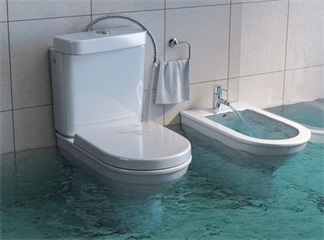The potential for problems in your plumbing system is very real. Often, the problems are hard to detect and even harder to fix. Backflow, the reversal of water flow in a pipe or other passage, is one such problem.
Low water pressure is one of the most common causes of backflow. If your water pressure is lower now than when the plumbing fixtures were first installed, you may be at risk for backflow. Higher than normal usage, such as multiple people showering at once or using the dishwasher, can also reduce your home's water pressure.
Another common cause of backflow is temperature differences between different parts of the piping system. Cooler water flows through pipes to warmer parts of the plumbing system and vice versa. When hot and cold water meet and mix, the resulting mixed water is no longer hot or cold. This is most common in double-handled faucets, for example to mix hot and cold water for washing dishes.
If water is not used regularly, sediment buildup can occur. This is common in the winter, especially when water pressure is low. Over time, sediment can build up and create additional pressure on the water flowing into your home. If the pressure is great enough, it can push the water back toward your home, which can cause a backflow.
If you experience backflow, there are many ways to fix the plumbing problem. First, check the water pressure in all the fixtures in your home. If the pressure is lower than normal, be sure to contact your local plumbing company to make the necessary repairs. Apart from this, your water heater may also be malfunctioning.
